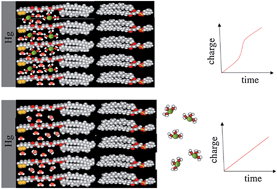Phospholamban and its phosphorylated form require non-physiological transmembrane potentials to translocate ions
Abstract
Phospholamban (PLN) and sarcolipin (SLN) are two single pass membrane

* Corresponding authors
a
Chemistry Department, Florence University, Via della Lastruccia 3, Firenze, Sesto Fiorentino, Italy
E-mail:
lucia.becucci@unifi.it
Fax: +39 055-457-3385
Tel: +39 055-457-3095
b Department of Chemistry and Biochemistry, Molecular Biology and Biophysics, University of Minnesota, 207 Pleasant St. S.E., Minneapolis, MN 55455, USA
Phospholamban (PLN) and sarcolipin (SLN) are two single pass membrane

 Please wait while we load your content...
Something went wrong. Try again?
Please wait while we load your content...
Something went wrong. Try again?
L. Becucci, M. Papini, R. Verardi, G. Veglia and R. Guidelli, Soft Matter, 2012, 8, 3881 DOI: 10.1039/C2SM07107J
To request permission to reproduce material from this article, please go to the Copyright Clearance Center request page.
If you are an author contributing to an RSC publication, you do not need to request permission provided correct acknowledgement is given.
If you are the author of this article, you do not need to request permission to reproduce figures and diagrams provided correct acknowledgement is given. If you want to reproduce the whole article in a third-party publication (excluding your thesis/dissertation for which permission is not required) please go to the Copyright Clearance Center request page.
Read more about how to correctly acknowledge RSC content.
 Fetching data from CrossRef.
Fetching data from CrossRef.
This may take some time to load.
Loading related content
